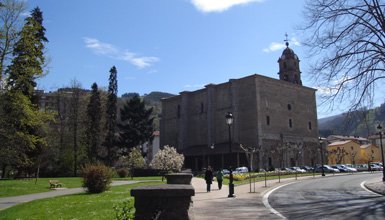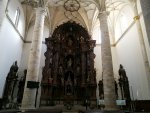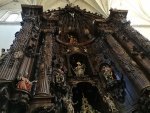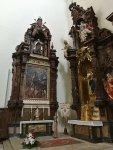This temple was built in two stages that were clearly separated: The first between 1542 and 1607; and the second between 1648 and 1672.
Despite this long time-lapse in the building process, Santa Marina is very uniform in style.
Its original square lay-out, consisting of three naves of equal height separated by four huge pillars with plain shafts and classical capitals, and a roof involving ornate ribbed vaults, is a typical example of the so-called Renaissance hall churches (hallenkirche).
The church was enlarged toward the end of the 18th century when the present choir was built, a magnificent example of Neo-Classical work designed by the great architect Alejo de Miranda. Inside, the vaults retain some of the original pictorial ornament (1582).
A further highlight is the absolutely stunning arrangement of Baroque altarpieces in the chancel. They are decorated with sculptures by the master artist Luis Salvador Carmona. The central altarpiece (1739-1743) is an imposing piece of architecture.
Through this altarpiece, its creator, Miguel de Irazusta, introduced the Rococo style into altarpieces made in Gipuzkoa.





